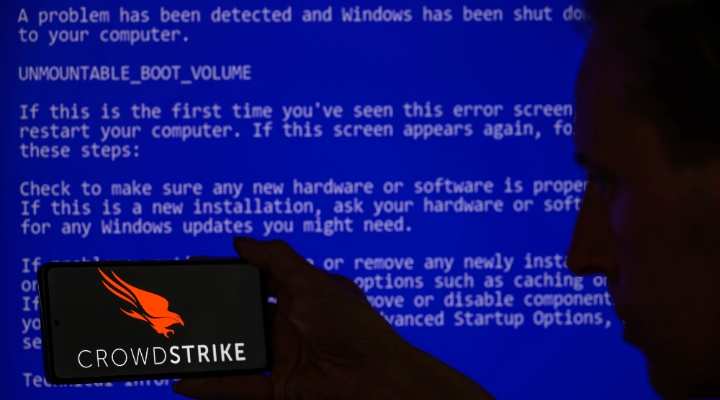One of the fundamental pillars of investing into listed companies is the one-share, one-vote principle that helps minority investors hold company executives to account. However, over the past few decades, this key tenet of the public market has come under pressure.
Since the mid-1980s, we’ve seen a rising trend for companies coming to market with dual-class share structures, which give founders and executives disproportionate control over voting rights. In the past four years, that trend has been accelerating even faster, driven by large Silicon Valley-based tech firms.
Of the 1,150 companies that floated in the US between 1980 and 1985, just 2.4% had a dual-class structure, data collated by Jay Ritter, a professor at the University of Florida, show. Of the 2,295 firms that listed between 1996 and 2000, 9.1% had dual-class structures.
Between 2015 and 2018, one-fifth of new issues had the dual-class structure. In 2017 alone, 28% came to market with a dual-class shares, with 35% of tech IPOs since 2015 having them.
Social media giant Facebook (FB), for example, gives a select group of insiders, including boss Mark Zuckerberg, 10 votes to ordinary shareholders’ one.
Ride-hailing app Lyft (LYFT) was criticised at its April IPO for giving its founders 20 votes to ordinary shareholders’ one. This means chief executive Logan Green and president John Zimmer will hold just shy of 49% of the voting rights, despite owning less than 5% of its shares.
Google (GOOGL) has three share classes. One class confers 60% of voting rights upon three people, another holds zero voting rights.
The IPO of social media platform Snap (SNAP) in 2017 caused a backlash, as the shares it listed on the New York Stock Exchange (NYSE) were non-voting.
At the time, the Council of Institutional Investors (CII), a US-based group of over 135 entities managing a combined $35 trillion of client money, said the Snap flotation signaled a nadir for public shareholder voting rights.
There have been repeated calls for dual-class shares to be scrapped, or at least reined in. The message seems to be getting through in some areas, with Uber dropping plans for a dual-class listing when it goes public in May.
The case for and against
In October 2018, the CII called on the two largest exchanges in the US, NYSE and NASDAQ, to bring in so-called "sunset provisions" for dual-class stock. This provision would require the share structure to convert automatically to one-share, one-vote “no more than seven years after IPO date”.
In the same month, a 23-strong group of company executives, including Berkshire Hathaway’s (BRK.B) Warren Buffett, JPMorgan’s (JPM) Jamie Dimon and BlackRock’s (BLK) Larry Fink, called for the same provision. Photo-sharing site Pinterest (PINS) took this approach when it went public in April.
There are some good reasons for a dual-class listing – and it should be noted Berkshire Hathaway does has two share classes, in order, Buffett claims, to protect the company from short-termist behaviour.
The structure in itself isn’t necessarily a negative thing, says Alison Porter, a portfolio manager at Janus Henderson. “If you look at some of the most successful technology companies in history, they are founder-led,” Porter explains, “if you want to innovate and disrupt, you need a very clear vision of that [along with] the ability to invest in the company and direct it in the way you want.
“We as shareholders would prefer to be aligned with a founder-owner who has the long-term interest of the company at heart than we would with shareholders who have a very short-term view of returns.”
It is true, says Jerry Thomas, head of global equities at Sarasin & Partners, that too many shareholders today are too short-termist. But he does not think dual-class structures are the right solution to protect against that.
Stephen Miles, head of equity at Willis Towers Watson, says dual-class shares “put a hole in the corporate governance safety net”. A sunset clause makes sense in order to guard against circumstances changing further down the line, which they inevitably will.
“If you have a strong management team, nothing changes and you’re in a steady state, then you may not need that safety net,” says Miles. “But my contention would be things do change over time. Things do happen and I think it’s a key attraction of public markets that you have that safety net.”
Thomas thinks dual-class structures lead to entrenchment, making it almost impossible for investors to hold management teams to account. “We’re already minority shareholders… [and] we have even less control with our vote in danger of being rendered pointless,” he says.
Thomas also warns about the risk of “extraction”, where a founder can enter into a related-party transaction with a company owned, say, by a family member. While the transaction may benefit the founder significantly, it might do so to the detriment of minority shareholders.
Ben Barringer, equity research analyst at Quilter Cheviot, describes the structures as a ticket to ride but with no control over where the train is going. “That’s fine if you trust management and trust where the train is going, but as soon as things start to go awry you’ve got no power.”
Why should investors care?
Institutional investors, of course, are backed up by large governance and stewardship teams who have the ability to get out and vote at company meetings. Therefore, they are rightly keen to ensure they have appropriate safeguards in order to make their voice heard.
“It should be a factor that investors consider when they are weighing up which stocks to buy,” says Laura Suter, personal finance analyst at AJ Bell. “But it shouldn’t be an immediate red flag that causes them not to invest in a company.”
Both Thomas and Barringer suggest either giving a dual-class stock a higher hurdle to hit before it makes it into your portfolio or taking a discount – of, say, 10% – to the valuation to make up for the loss of control.
Indeed, the governance risks of dual-class stock “can be expected to both increase the expected per share future value of Lyft… and increase the discount to a per-share value of Lyft at which low-voting shares will trade”, Lucian Bebchuk and Kobi Kastiel, professors at Harvard Law School, recently wrote.
“Each of these effects would operate over time to reduce the market price at which the low-voting shares of public investors would trade,” they add. “These effects should thus be taken into account by any public investors that consider holding Lyft shares.”
Interestingly, Google’s ‘C’ shares, which hold voting rights, trade at only a slight premium to its ‘A’ shares (GOOG), which hold zero voting rights. This suggests public investors don’t put much weight on the argument – easy to do when shares have almost doubled within the past three years.







:quality(80)/cloudfront-us-east-1.images.arcpublishing.com/morningstar/347BSP2KJNBCLKVD7DGXSFLDLU.jpg)
















